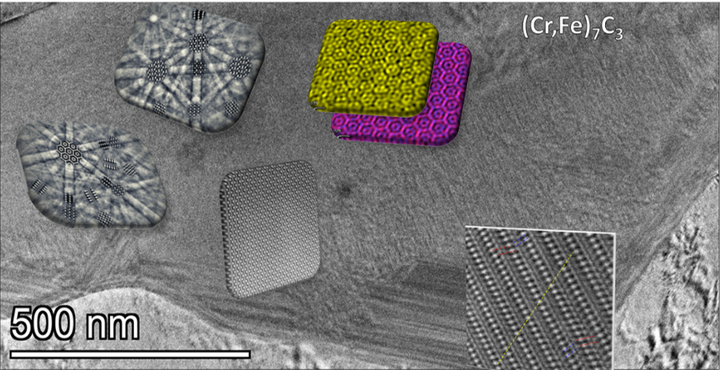M$_7$C$_3$: The Story of a Misunderstood Carbide

Abstract
Since the discovery of the M7C3-type carbide in 1935, it has been the subject of many experimental and theoretical studies. Initially, the structure was thought of as being either trigonal or hexagonal, while later publications indicated that the structure was more likely to be orthorhombic. Even today, 8 decades after its discovery, many publications claim that M7C3 carbides are either hexagonal or orthorombic “beyond doubt”, while others, acknowledge the lack of agreement in the literature and try to resolve it using first principles calculations which rely on the atomic positions in the previously suggested structures. To date, no hard evidence was presented to support either claim in an indisputable manner. Using EBSD (electron backscattered diffraction), TEM (transmission electron microscopy) diffractions and high-resolution STEM (scanning transmission electron microscopy) imaging gathered from 8 zone-axis of the (Cr,Fe)7C3 phase formed in the as-cast AlCrFe2Ni2 high entropy alloy, we were able to determine that only the hexagonal structure is a viable option. Furthermore, we demonstrate the co-existence of two variants of the newly revealed atomic structure which we believe were mistakenly identified as stacking faults in previous studies.